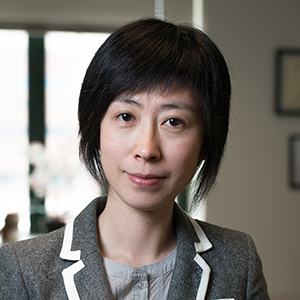
UConn Professors Uncover Optimal Configurations of Collaboration Networks to Improve Innovative Performance
There is an old saying that it doesn’t matter what you know in life but whom you know that makes you successful. While the former may not be true, evidence by some University of Connecticut researchers indicates the latter certainly may be accurate.
What UConn School of Business researchers have found is that the combination of connections from friends and colleagues, and new knowledge obtained from their network associates, can actually boost innovative performance.
“I’m really excited that we’ve been able to establish the importance of a well-connected network and the value that has on emerging innovation,” said Xinxin Li, an associate professor in the department of Operations and Information Management (OPIM). “New, explicit knowledge and tacit, combinatory knowledge can be sourced from different positions in the network and combine to generate newer ideas.”

“Pipes, Pools and Filters: How Collaboration Networks Affect Innovative Performance,” an article that examines this topic, will soon be published in the Strategic Management Journal. Co-authors are Ram Gopal, professor and OPIM department head; Harpreet Singh, a UConn alumnus who earned his Ph.D. in 2010 and is now a professor at the University of Texas at Dallas, and David Kryscynski, a professor at Brigham Young University.
They compiled their results based on the work of almost 90,000 software inventors, who received 70,000 patents, which revealed evidence that combinatory knowledge from direct contacts and new knowledge from indirect contacts significantly affect innovative performance.

Network contacts can provide new knowledge that inventors can combine and reconfigure for innovations, Li said.
In their work, they identify “pipes,” “pools” and “filters” in the collaboration network and point out that people can serve different functions at different times. Network contacts function as “pools” of knowledge that can flow through the relational “pipes” of the social network. And while individuals function as knowledge pools in these networks, they may also function as ‘filters,’ meaning that they may allow some knowledge to pass through, while preventing others.
For instance, knowledge and information that are highly explicit can be easily passed through a network. In contrast, knowledge and information that are highly tacit may be difficult or even impossible to pass on without a deep investment by all involved. New knowledge, Li and her colleagues said, is more likely to come from indirect contacts, whereas the investment involved necessary for tacit knowledge to be transferred can only be made between direct contacts.
The researchers tested their hypotheses using patent data from the knowledge-intensive software industry. The creation of software innovations is dependent on a large number of software technologies and typically requires groups of inventors with diverse forms of knowledge to collaborate, making software an interesting context in which to study the relationship between collaborative networks and innovation. They collected data from the U.S. Patent and Trademark Office for patents submitted between 1976 and 1997 and granted by 2004.
The researchers’ results emphasize the need to study the resource pools and the connecting pipes of social networks simultaneously and provide insights regarding the optimal network configurations to access both diverse new knowledge and combinatory knowledge to improve innovative performance.